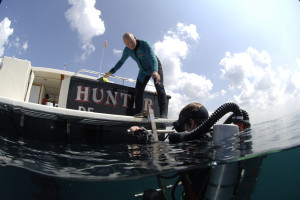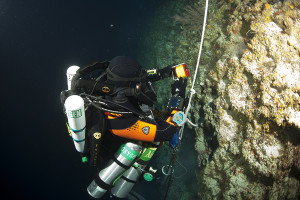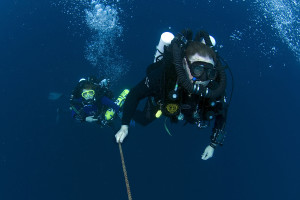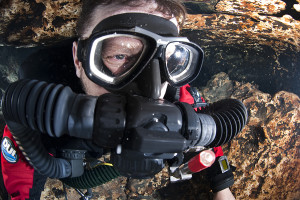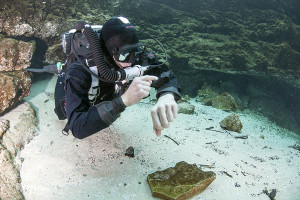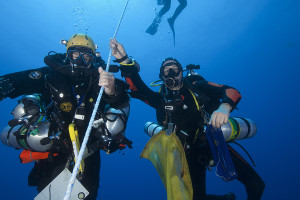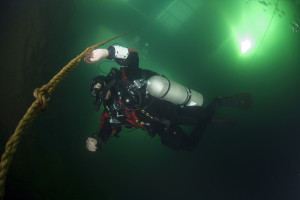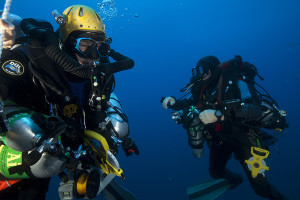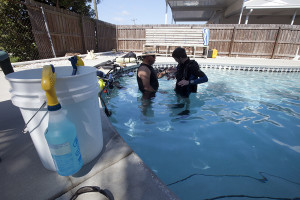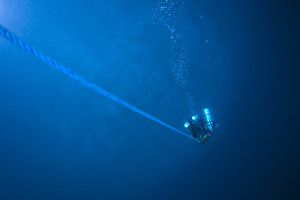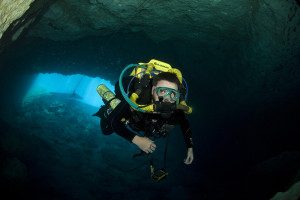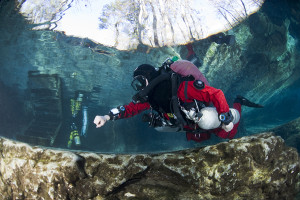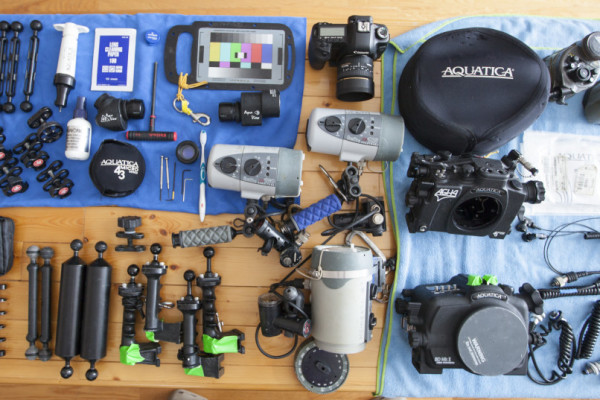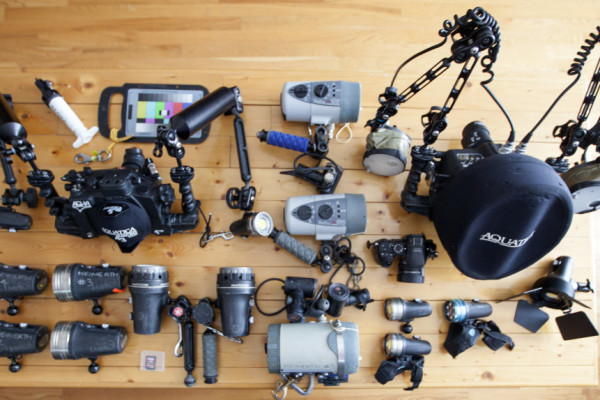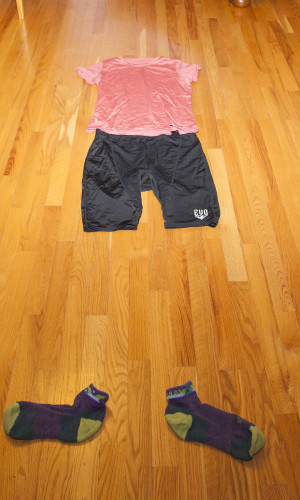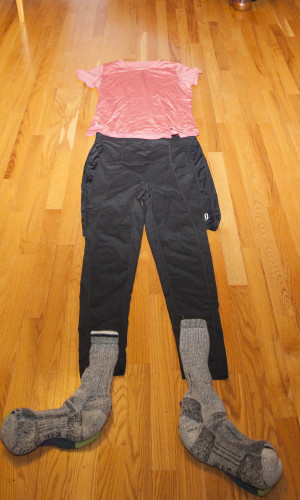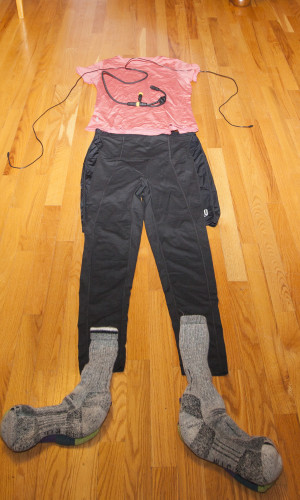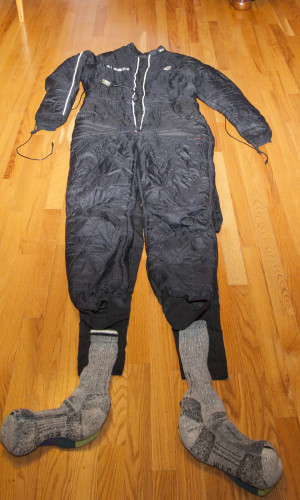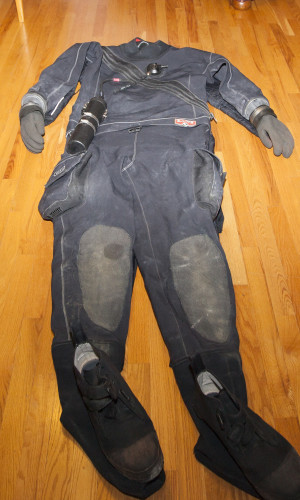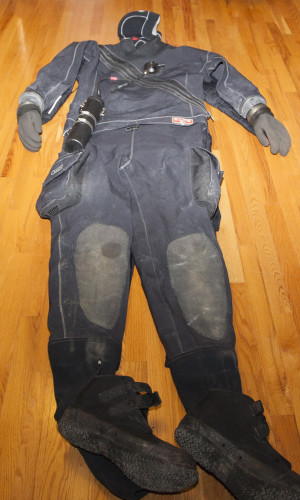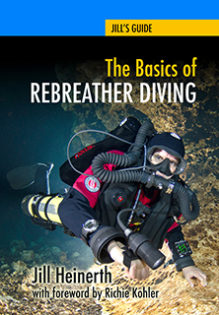What is a Rebreather?
Traditional open circuit scuba is inefficient and time limited. Much of every exhaled breath from a scuba tank is wasted. Our bodies only use a very small portion of the oxygen component of air or nitrox. We metabolize a tiny bit of the available oxygen and expend the rest into the water column in a stream of bubbles. A rebreather is designed to recapture all or part of that exhaled breath and recycle as much as possible for the diver to use again. As a result, we are offered many advantages over traditional scuba, such as a longer bottom time per unit of gas, warmer breathing gas and reduced bubbling that might frighten away marine life.
It sounds like a simple enough concept, but rebreathers perform some other important tasks. Each exhaled breath contains carbon dioxide, which can rapidly build up and cause our bodies distress. The rebreather has to “clean” the gas and remove carbon dioxide before sending it back to the diver. It also has to make up the lost volume of oxygen that was metabolized by the diver. It’s a balancing act. The rebreather has to predictably and repeatably add small amounts of oxygen and remove carbon dioxide to keep the life support environment optimized and safe for a diver to breathe.
An astronaut wears a rebreather on a space walk, but at every moment there is a team of experts at Mission Control watching his or her every move. A Medical Officer or Safety Supervisor can intervene if there is any indication of a problem. Rebreather divers are oftentimes using life support systems that are more complicated than those used by astronauts. Divers generally have a smaller safety net and less redundancy. There is no question that manipulating a life support environment is the most dangerous and sophisticated thing a person can take on. Worse yet, human beings do not follow rules very well. Significant training is required to use a rebreather and diligent attention to safe diving protocols is essential.
Rebreathers in Action
Underwater Cameras
During the project, we’ll be documenting artifacts and the mission itself using underwater video and still camera systems. These are essentially high quality cameras housed in pressurized waterproof cases. Working in the complete darkness, we’ll bring significant lighting assets and underwater strobes that synchronize with flash units on the camera. This additional lighting is carried and deployed by a diver/model who is trained as an “underwater grip.”
Technical Diving
In recreational scuba, a diver is able to swim safely and directly to the surface at any time. In technical scuba, divers have either a real or imagined roof over their head. A technical diver might be involved in swimming through overhead environments such as wrecks, mines and caves or they may be forced to stay down due to decompression obligations caused by inert gas that becomes dissolved within the tissues of their body. The Bell Island team are all highly trained and well equipped technical divers, armed with extreme redundancy in their equipment. At any given time, an explorer must be able to deal with a worst case scenario emergency independently. It takes years of dedicated training and a significant investment in equipment. This type of diving should never be attempted without proper professional training and qualification.
The Bell Island Expedition Team uses industry-leading standard safety procedures. All divers use checklists to confirm the operational safety of the rebreathers prior to diving and will not enter the water unless a unit is fully functional.
Exposure Protection
Water in the mine is freshwater and hovers around 6°C while the ocean is a chilly 1°C on the sea floor. Temperatures around the icebergs in Conception Bay can even drop below zero. Divers need to wear high-tec dry suits to stay reasonably dry and warm. Suits seal around the neck and wrists, Dry gloves are snapped on the wrist rings and some team members even wear heated undergarments powered by a large battery pack.
The Basics of Rebreather Diving is available internationally on Amazon.com and through dive retailers.
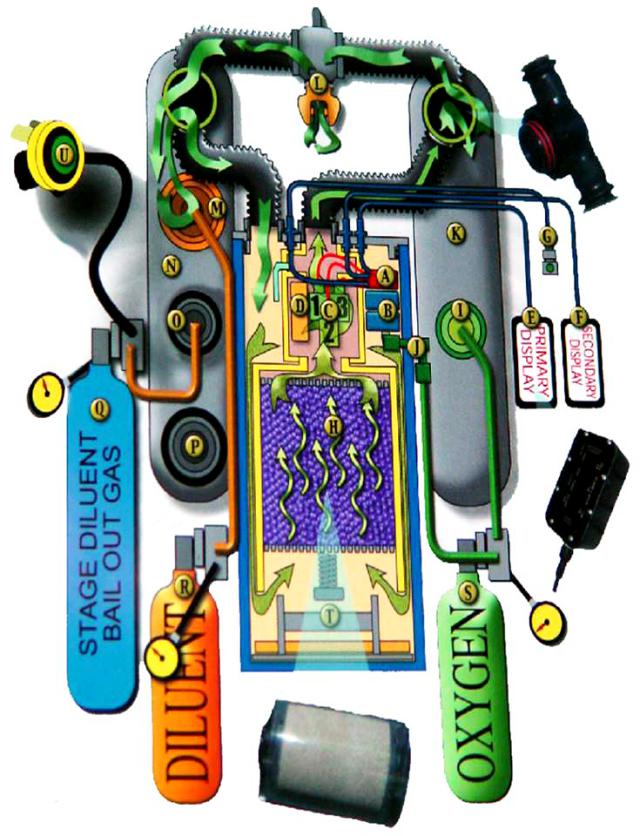
Megalodon Rebreather
Innerspace Systems
A. Primary Electronics
B. Batteries
C. Oxygen Sensors
D. Oxygen Sensor Moisture Pad
E. Primary Wrist Display
F. Secondary Display
G. Heads Up Display
H. Carbon Dioxide Scrubber
I. Manual Oxygen Valve
J. Oxygen Inlet Port
K. Inhalation Counterlung
L. Mouthpiece Block
M. Automative Diluent Valve
N. Exhalation Counterlung
O. Manual Diluent Addition Valve
P. Vent Valve
Q. Bailout Gas
R. Diluent Tank
S. Oxygen Tank
T. Moisture Absorber
U. Bailout Regulator
